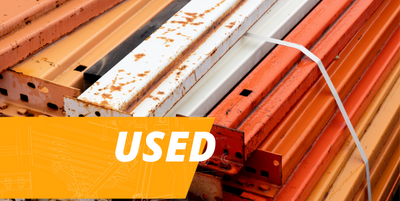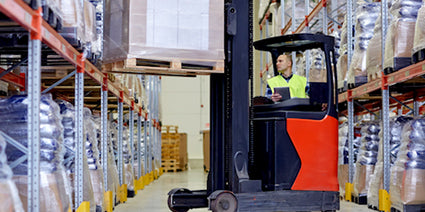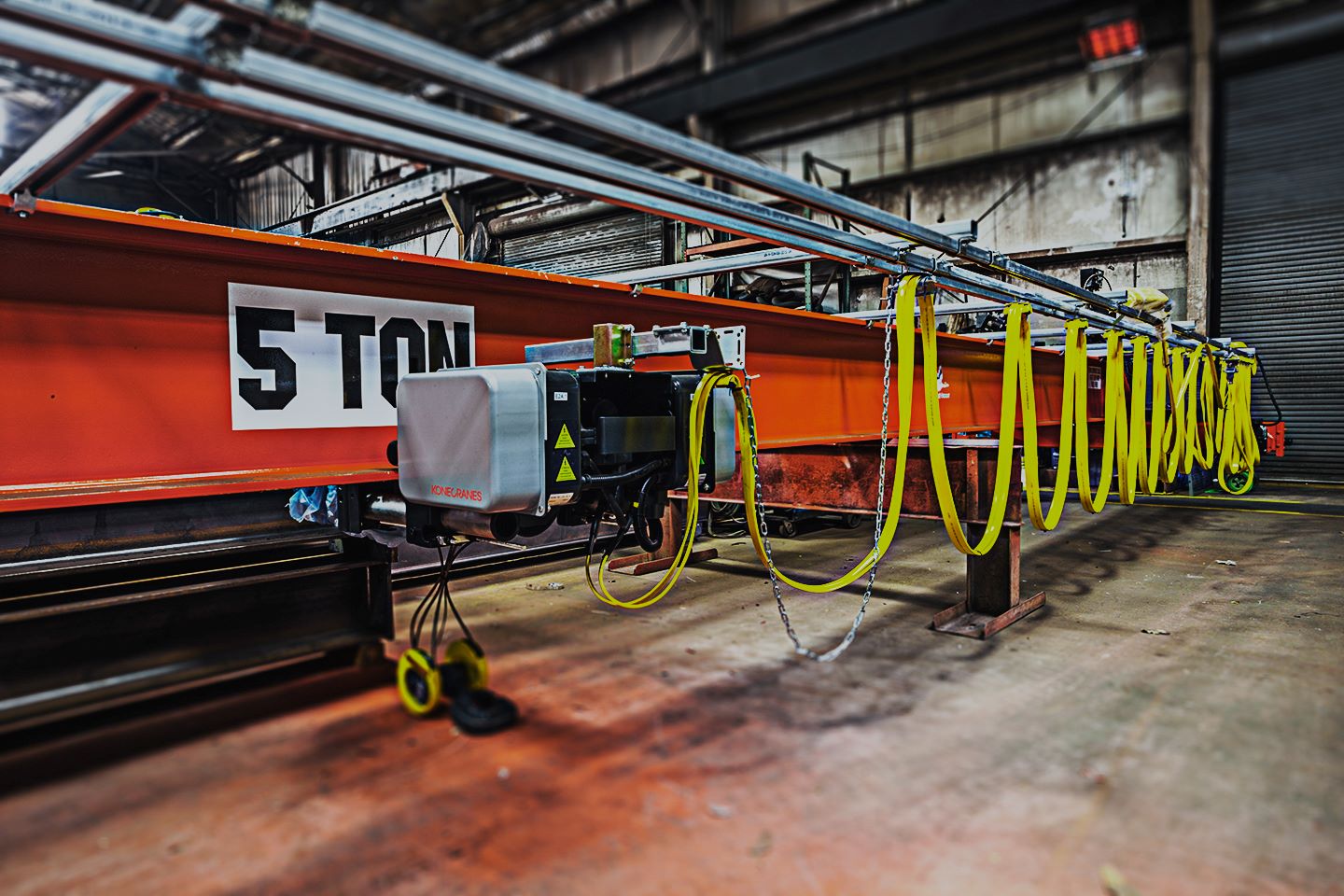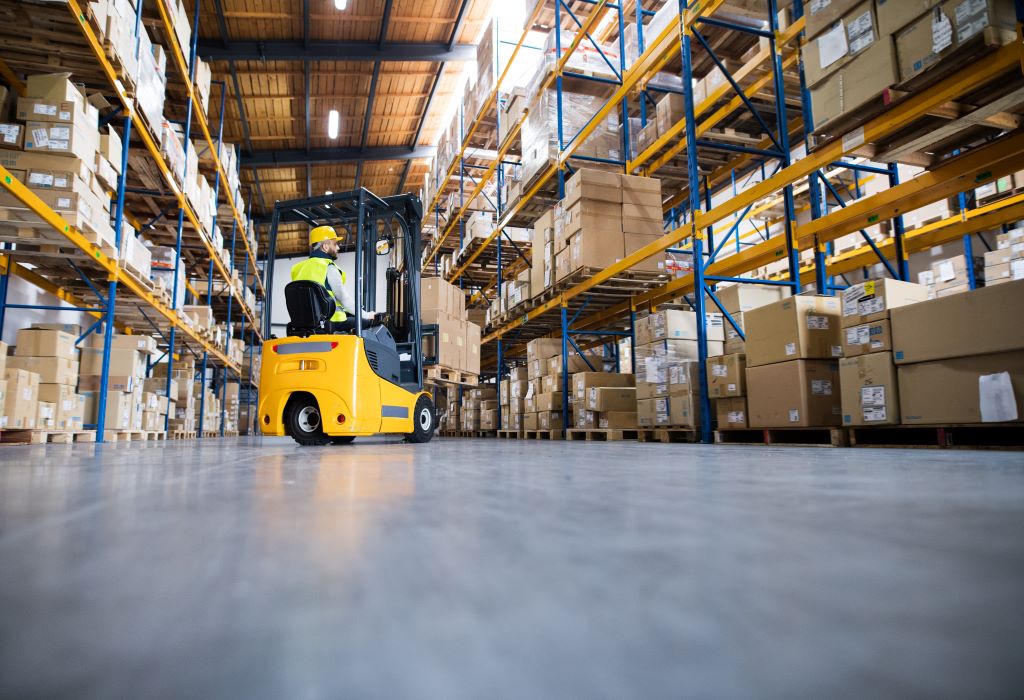Your Cart is Empty

Pallet Racking & Deep Storage | HOJ Innovations
All warehouses have pallet racking as it is currently the top solution for high-density storage in a facility. Pallet racks are typically made up of beams (the horizontal cross braces where the pallet rests), uprights (The vertical frame pieces), and wire decks, which add extra support and safety to pallet racking.
In this article, we’ll be discussing the basics of pallet racking: why it’s important, finding the right racking for your business, what you need and doesn’t need, and getting the best deal you can.
Based out of Salt Lake City, Utah, HOJ Innovations sells both new and used pallet racking of every size imaginable. We serve both large and small businesses all over the country and take on hundreds of custom projects each year. If you have questions, want to purchase pallet racking, or want expert advice, reach out to us today.
Table of Contents:
- Pallet Racking 101
- Finding the Right Pallet Racking
- It doesn’t have to be expensive
- Conclusion
Pallet Racking 101
One of the essential parts of any growing operation is pallet racking. From small to large businesses, the one thing they all have in common is the pallet racking. Every business uses it because it is cheap, easy to install, simple to maintain, and incredibly efficient if a warehouse is organized correctly.
Why is Pallet Racking Important?
There are a few reasons you would want to consider making the investment into pallet racking.

First, many cities require your inventory to be off the floor, and a pallet doesn’t count. This is dependent on the products you are selling so it is best to be sure to check with your local municipality if this applies to you. If an OSHA representative were to stop by, then they could put a stop to your operation until changes are made.
Other than the benefit of potentially not being shut down, another benefit is that it lets you take full advantage of vertical storage space. This allows you to increase the inventory density in an easy, cost-effective way. As an added benefit, this frees up floor space for workers to move around and fulfill orders.
Second, other lighter-duty shelving is just that. Light duty. Some companies we work with require lighter-duty shelving, such as a Penco shelf system. When it comes to increasing a facility's storage density, nothing is better than traditional pallet racking currently. Pallet racking is incredibly versatile, sturdy, and capable of holding tens of thousands of pounds of product per bay, making it perfect for any business.
Third, pallet racking is highly organized. Pallet racking wasfirst introduced in the early 1900’s and was made of wood. In the 1950’s they started producing metal uprights and beams because they were more durable.
Since then, the capabilities of pallet racking have been pushed to their max, allowing for highly organized warehouses. Companies such as HOJ innovations and WarehouseOS specialize in helping companies achieve maximum efficiency by providing software solutions combined with highly organized spaces.
You might wonder, how is a space organized? It all starts with a careful analysis of the space in question. With over 50+ years of experience, we have highly trained and experienced individuals who analyze every detail of your operation. They look at your inventory to distinguish between high and low-volume items, where those items are placed throughout your warehouse, and your current picking routes to suggest faster, more efficient ways to pick. We go as far as measuring how many items can be picked and shipped in an hour and how long your employees are waiting around.
This careful analysis can take months to complete. However, it is worth the time because your company will have a faster, more efficient warehouse as a result of the analysis.
When working with a past client, we discovered that one of their managers spent time every day waiting for all the picking sheets to print. Every employee had to wait for their picking sheet before they could start picking. We measured the amount of time that he was waiting every day for these sheets to print. For the duration of a single day, it didn’t seem like a significant inefficiency. When we totaled for the duration of the whole year, we found that he was spending about two months’ worth of time just watching paper print.
A highly organized system will run more smoothly, simplify the employees jobs, and ultimately save you money on every package shipped.
Finding the right pallet racking

In this article, we won’t go into detail about the different types of pallet racking, but there are a few common varieties depending on your project. These range from rolled, and formed, to structural racking. The difference lies in how they are built and assembled.
Roll form racking is standard for most warehouses and will suit the needs of 90% of companies. Structural racking is for the other 10% of warehouses. Structural racking is heavy-duty racking and can hold significantly more weight than roll form racking.
Unless you are an expert in pallet racking, it can be difficult to know what type of racking your business needs. There are a few areas you should consider.
Capacities & Dimensions
How heavy is your heaviest pallet, and what are its standard dimensions? Knowing your pallet weight is critical in picking the right high-density racking. Each beam level (2 beams) has a weight limit.

For example: if you chose a standard duty 8’ beam that is rated to hold 1 ton (3,000 lbs) and each of your pallets weigh 2,000 lbs, then you would be overloading every beam level that has that much weight. This situation can endanger your employees, and city inspectors can shut down or withhold permits until the weight violation is fixed.
Dimensions have more to do with how wide and deep each bay of your racking goes. As a general rule, you want your pallet to overhang the front and back beams by about 2-3 inches on either side. If your pallet overhangs more than the recommended amount, you risk your pallet catching on a passing forklift and causing it to fall down. You also don’t want your pallet to overhang less because it increases the chances of the pallet falling between your beams.
Using a standard GMA pallet as an example, it has a length of 48” and a width of 40”. This would mean you would want a common 42” deep upright in this example. Your pallet would overhang perfectly by about 3” on each side of your beam.
Beam Length - Beam length for industrial pallet racking is determined by the size and capacity of the pallets that will be placed on them.
Continuing on with the example from above:
If you chose 8’ foot beams, you could place 2 pallets on every level with about 16” of space left over. If you want to have 3 pallets on every level, you would need to upgrade to the 12’ beam. This is the next length that would allow for 3 GMA pallets.
Do I need Wire Decking? The answer to this question depends on what you want to do. Some companies skip wire decking and carefully place pallets on the front and back beams of each unit. Other companies place cut lengths of wood to help support the pallets.
However, the safest and best solution is wire decking. You can’t rely on your forklift drivers to place the pallet perfectly every time, and you want to avoid a mistake that would involve a full pallet of your inventory.
Upright heights - This is often an overlooked area of pallet racking. Most companies, when designing a warehouse, purchase uprights that are just high enough to cover their current needs. This can work while you are just getting started. However, this isn’t great for a growing company. Many companies outgrow their racking quickly, especially when the economy is booming.
You should purchase uprights that are actually higher than what you need. This would allow you to easily add more pallet levels as you expand your current operation.
If you are working with a distributor such as HOJ Innovations, let them know that you wish to future-proof your business and plan ahead.
Anchors - How many anchors do you need for each upright? That depends on the loads on your racking. The best way to know is to have an engineer inspect the project and inform you of how many anchors are necessary.

Your Forklift - How high do you want your racking to go? A good point of measure is your forklift. How high does your forklift currently go? Unless you plan on purchasing a new forklift for a new building, you won’t be able to store anything above the max lift height of your forklift.
Also, consider the width of your forklift. It needs room to turn and grab pallets off shelves. Aisles that are too narrow would prevent a forklift from operating safely. Aisles that are too wide would prove to be inefficient, wasting valuable floor space.
It doesn’t have to be expensive

If you are a smaller operation concerned with a tight budget, there are plenty of used pallet racking options available for you to choose from. Give us a call and let us know you need some used pallet racking. Sometimes we have used pallet racking on hand at a discounted price.
Used pallet racking typically goes faster as it is sold on a first come first serve basis. It is drastically cheaper and is usually ready for pick up within a few hours.
Conclusion
There is a lot to consider when purchasing proper pallet racking. It takes an in-depth knowledge of your inventory, forklift sizes, and capabilities in order to pick the right racking.
When utilized correctly, pallet racking can be an incredible asset to every business by increasing efficiency and reducing costs. If you have questions about pallet racking, please reach out, and we are happy to assist you.









